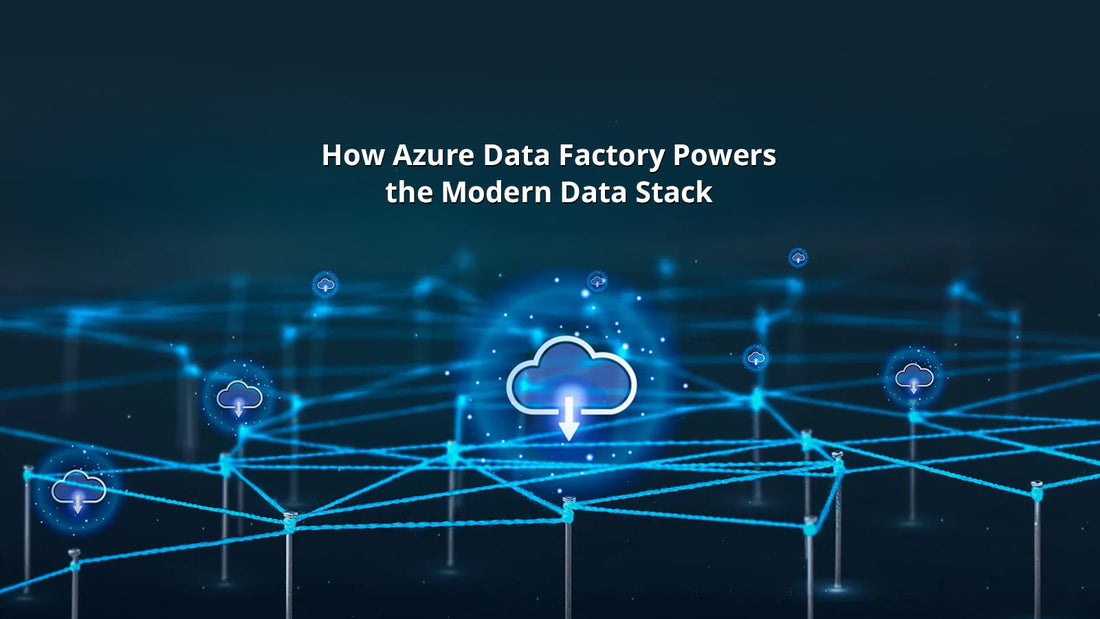
How Azure Data Factory Powers the Modern Data Stack
In today’s data-driven world, organizations are increasingly relying on data to power decisions, fuel innovation, and deliver personalized experiences. However, the diversity and volume of data sources—from on-premises systems to cloud-based applications—make data integration a complex challenge. Enter Azure Data Factory (ADF), Microsoft’s cloud-based data integration service that enables seamless and scalable data movement and transformation.
What is Azure Data Factory?
Azure Data Factory (ADF) is a cloud-native data integration service that allows users to create, schedule, and orchestrate data pipelines at scale. Whether you're ingesting data from various sources, transforming it for analytics, or loading it into data warehouses and lakes, ADF provides a unified solution.
It supports both code-free and code-centric development, making it accessible to both citizen developers and professional engineers.
Key Features of Azure Data Factory
1. Hybrid Data Integration
ADF supports over 90 built-in connectors, enabling integration across on-premises, multi-cloud, and SaaS environments. You can pull data from SQL Server, SAP, Amazon S3, Salesforce, Oracle, and more.
2. Data Flow and Transformation
Using Mapping Data Flows, you can build visually rich, scalable, and powerful transformation logic without writing a single line of code. For developers, ADF also supports custom transformations with Azure Databricks, HDInsight, or Azure Functions.
3. Orchestration and Monitoring
ADF provides a powerful pipeline orchestration engine to manage data movement and workflows. Built-in monitoring and alerting tools give you complete visibility into your data pipelines and help you troubleshoot issues in real time.
4. Scalability and Performance
Being cloud-native, ADF scales on demand. It can handle massive datasets with ease and supports parallel data movement for high throughput.
5. Integration with Azure Ecosystem
ADF integrates seamlessly with other Azure services like:
- Azure Synapse Analytics (for data warehousing)
- Azure Data Lake Storage (for big data)
- Power BI (for business intelligence)
- Azure Key Vault (for secure credential management)
Why Use Azure Data Factory?
✅ Cost-effective: Pay only for what you use with flexible pricing models.
✅ Low-code / No-code Development: Great for teams with mixed technical backgrounds.
✅ Enterprise-ready: Security, compliance, and governance are built-in.
✅ Global reach: Deploy in multiple regions to meet data residency and latency requirements.
Common Use Cases
- ETL/ELT Workflows: Extract, transform, and load data into analytics platforms.
- Data Migration: Move data from legacy systems to modern cloud platforms.
- Data Lake Ingestion: Automate ingestion into Azure Data Lake Storage.
- IoT and Real-time Analytics: Process streaming data from devices and sensors.
Getting Started with Azure Data Factory
- Create a Data Factory via the Azure Portal.
- Define Pipelines using the visual designer or JSON.
- Use Data Flows for transformation or call external compute engines.
- Monitor your pipelines with the built-in monitoring UI.
Whether you're a startup scaling up or an enterprise modernizing legacy systems, Azure Data Factory is a cornerstone of any cloud-based data strategy.
Final Thoughts
Azure Data Factory is more than just a data pipeline tool—it's a comprehensive data integration platform designed for the modern data stack. Its flexibility, scalability, and seamless integration with the Azure ecosystem make it a top choice for businesses aiming to harness the full power of their data.
